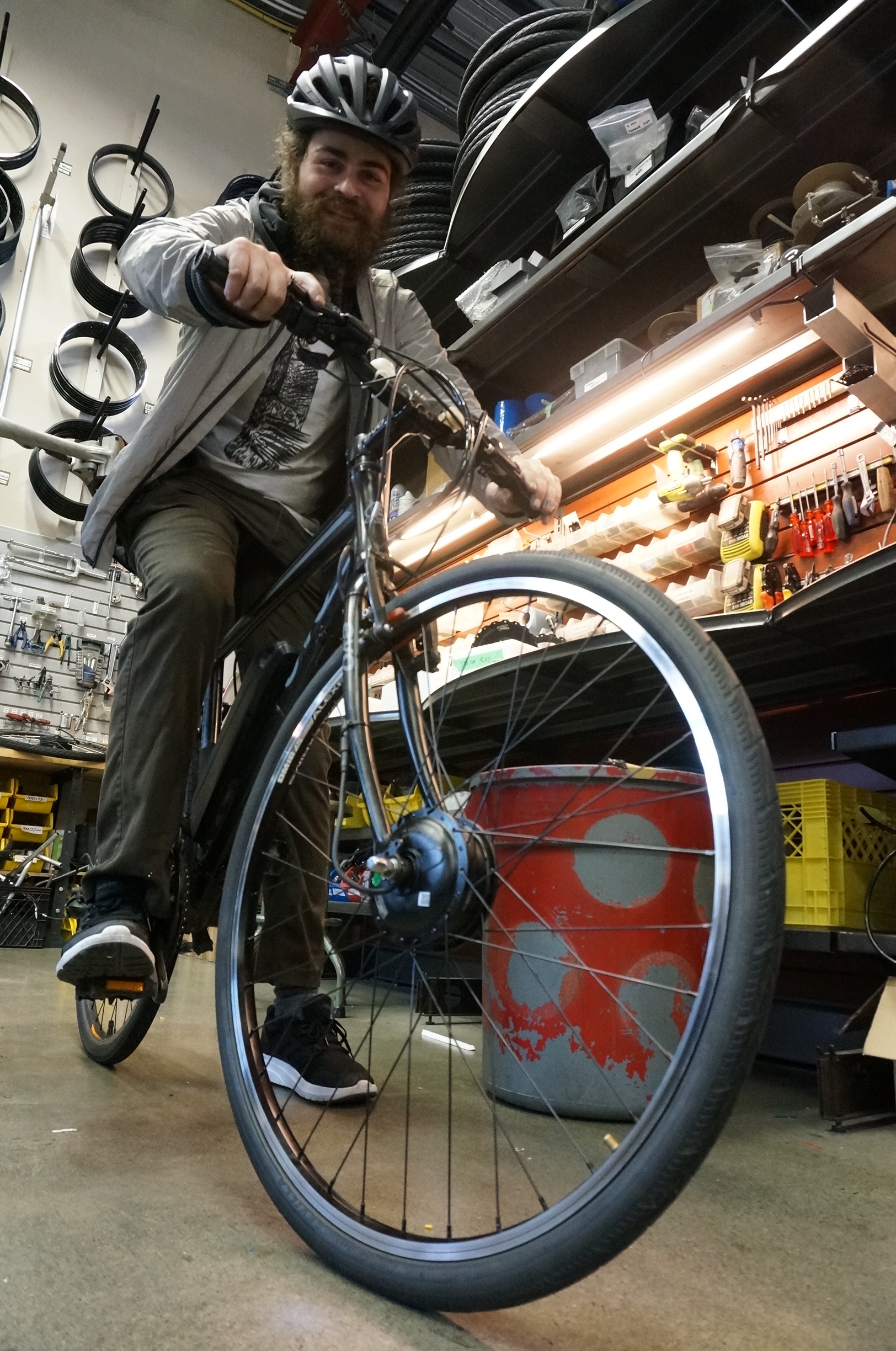Electric bicycles have been quietly taking the streets by storm in many parts of the world. Why? Because they’re a fantastically fun and efficient way to move around. You get all the joys and freedom of riding a bike (avoiding traffic congestion and parking, for instance) while smashing through physical limits on your ability to climb hills and cover great distances.
Once you’ve got an electric bicycle it’s easy to leave the car parked in the driveway for all those short and medium-length errands. The e-bike will get you there faster, and with a 98% lower carbon footprint!
While there are many factory-made e-bikes these days, the movement was really pioneered and championed by a DIY maker community in the late 1990s and early 2000s who were electrifying their own bikes from scratch. You too can join in this phenomenon with just a spare afternoon.
In this project we’ll show how to convert your own bike into an electric-assist bike, using a basic front wheel hub motor kit. There are countless options on the market for front motors, rear motors, and mid-drive motors spanning all kinds of weights and power levels, but we’ll focus on a low-power front drive because it’s among the simplest to install and has the best chance of being compatible with any random bike in your garage.
YOUR BASIC E-BIKE CONVERSION KIT
Hub motor wheel is small and lightweight (5lbs) and runs a totally silent helical gear system. It’s not a power machine for racing up hills, but it provides enough boost to transform your bike into something new while still feeling and handling like a normal bicycle and not a scooter. This motor is already laced into a 700c rim, common on road and hybrid bikes. Other sizes are available, including 26″ for older mountain bikes and 27.5″ for newer ones.
Battery pack We chose a 36V, 16.5Ah downtube battery pack because it’s light and still has decent range, about 35–40 miles on a charge. Larger batteries are available if you need to travel further, but they’re proportionally heavier and more expensive.
Motor controller The Baserunner motor controller in this system is built into the mounting cradle of the battery pack. On other kits the controller might be built into the motor, or supplied as a separate box.
Torque arm secures the motor axle to prevent it from spinning inside the frame. The motor itself has tabbed washers which do the job in many cases, but a proper torque arm provides extra security and is essential on weaker aluminum forks.
Throttle regulates the power you get from the motor. We’re using a thumb lever throttle since it’s most versatile, but there are also twist-grip throttles that act more like a motorcycle grip.
Spiral wrap and zip ties hold the motor extension cable and throttle wires snug against the frame and help the whole installation look neat.
INSTALL YOUR E-BIKE MOTOR
The following steps work the same for any ordinary bike. In this build, one of our new staff at Grin Technologies (hi Stuart!) had a used hybrid bike that he wanted to convert in order to speed up his commute.

You can watch a video of a similar kit installation first.
LEARN MORE
Visit ebikes.ca and explore the Learn menu to find out why hub motors are awesome, the benefits of converting a bike over a factory e-bike, the history of the e-bike movement, and more. And jump into the e-bike community.
Got a different kind of bike or different needs? Watch a video overview of all the different e-bike conversions.





